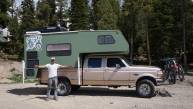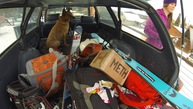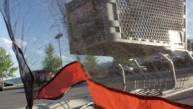tags:
Jackson, WY, United States |
ski town housing issues |ski town homelessness |living rent free in ski town |jackson hole housing crisis |how to live out of your car |how to be homeless |finding a house in a ski town |dirtbag's guide |car camping
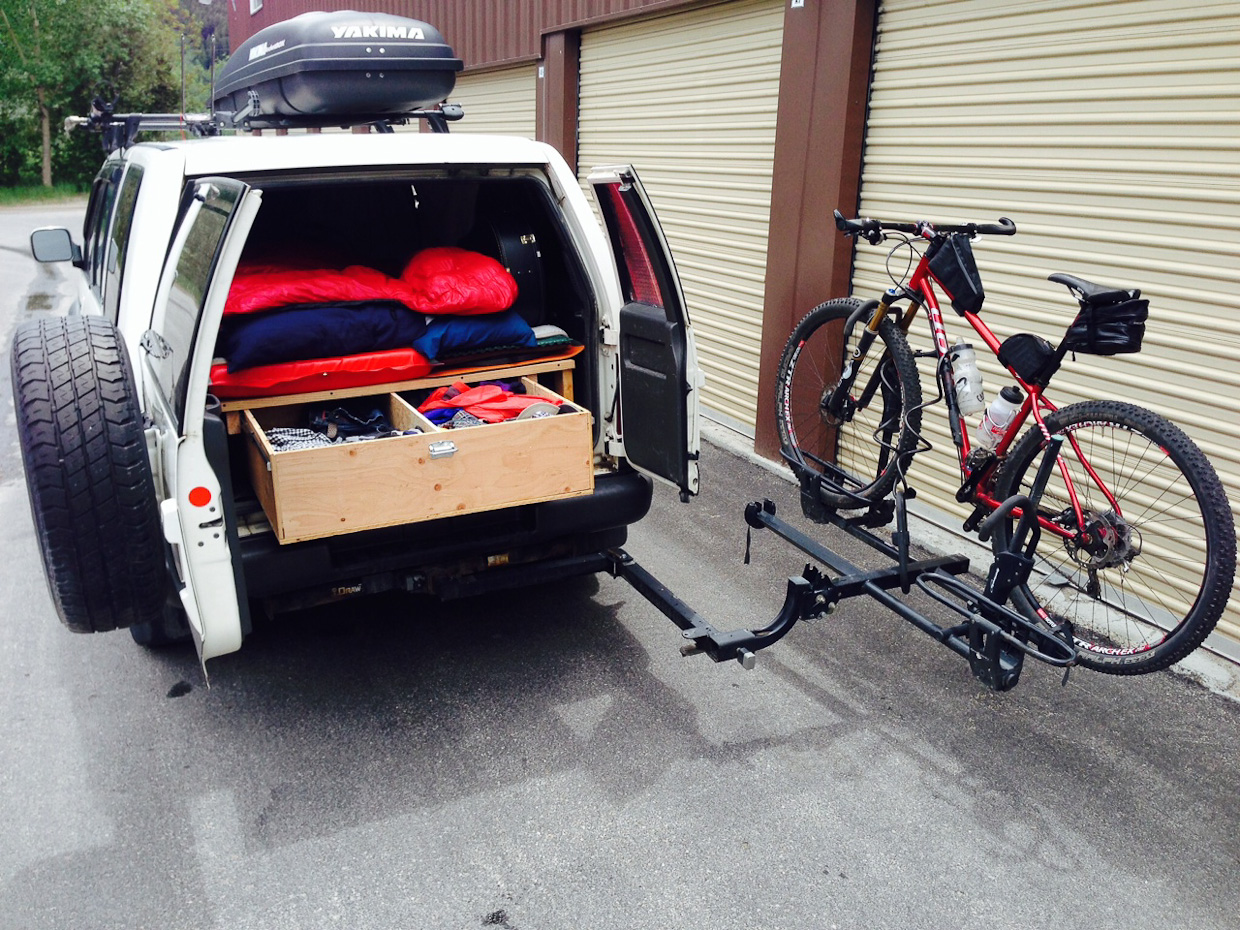 Locked, loaded, and gleefully ready for seasonal homelessness!
Locked, loaded, and gleefully ready for seasonal homelessness!
Despite its popularity as a topic this year, there’s nothing new about difficult housing situations in ski towns. But even if the lodging’s not easy, powder days are right out the door, and brainless jobs, parties, and more powder days are all worth a lot of inconvenience. This is, in fact, why otherwise level-headed people put up with the housing…let’s use the euphemism “challenge” here…that exists in nearly every ski town since the inception of ski lifts, a challenge whose rate of increase mirrors almost exactly the increase in local property values.
Some ski towns, like my adopted one-Jackson, Wyoming-have extra special problems, as locals say the housing challenge (“crisis” is becoming a more popular term in the mayor’s race) is getting much, much worse. Jackson’s summer traffic is leaps and bounds above the flow of winter visitors, with over 2.5 million people visiting town compared to the ski area’s 500,000 annual skier visits.
It’s a great time to make money for winter, but while there are tons of jobs, there is also significantly less housing; at last check, for the 150 some-odd job listings in the local classifieds, there were less than 10 available rentals. This makes a housing situation that’s already a pain in the ass in the winter a veritable disaster in the summer. 10-year residents of the valley with full-time jobs, their options exhausted, are simply putting themselves up in their own cars for the summer, testing the extended-stay camp limits for the national parks and shifting between friends’ driveways from Memorial Day through Labor Day.
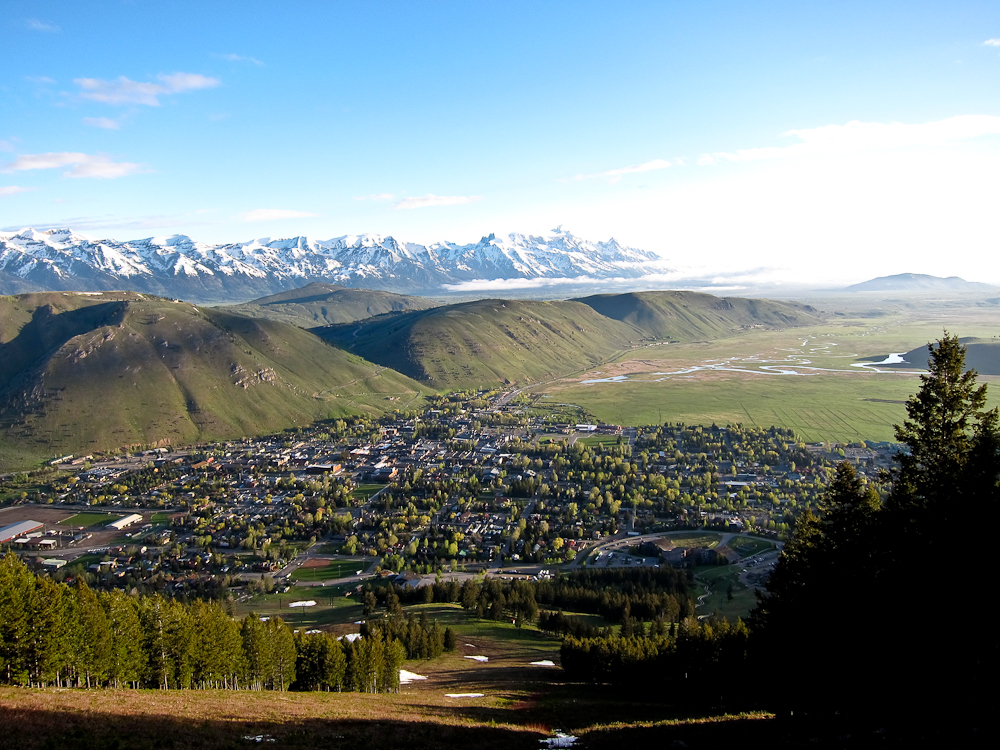 Gorgeous, breathtaking Jackson Hole-there's housing down there somewhere (no there isn't)!
Gorgeous, breathtaking Jackson Hole-there's housing down there somewhere (no there isn't)!
It’s dire again this year – at midsummer, newcomers, as well as long time locals in Jackson and other resort towns, have found themselves still involuntarily out on their duffs along with their houseplants and furry creatures. We’re not going to delve into ski town housing policy problems or rent control in this article. But are going to help you understand how to live comfortably with no actual house to go home to. Plus, at this point, even the most generous of friends are truly sick of your couch surfing (and now you can admit it, their hideous thrift store furniture sucked anyway, and gave you asthma).
While it would require an enormous investment (say, 20% down on a home that’s at least $500,000) to solve your housing issue for the long term, for right now, it only requires a small investment to become more comfortable and independent as a homeless skid/full-time employee this summer. Since you’re not paying rent, you should have some extra cash on hand to purchase the appropriate tools to make your four-wheeled address as comfortable as the oversized RVs currently pouring into your mountain town and blocking the entrance to the grocery store.
Here, we rounded up a few cool product ideas that we wish we had had for those summers living in a 1989 Chevy Blazer (the misery of which was instantly forgotten upon arrival in British Columbia with summer savings for five and half work-free winter months!). These products may even take you right up to November, rent-free. If you haven’t found a place by then… well, we’ll need an entirely different survival-focused article to deal with that. But for the price of about one month of price-gouged rent, you can set yourself up for several summers of comfortable rent-free mountain town living.
The 6 Things You Need To Survive Ski-Town Homelessness:
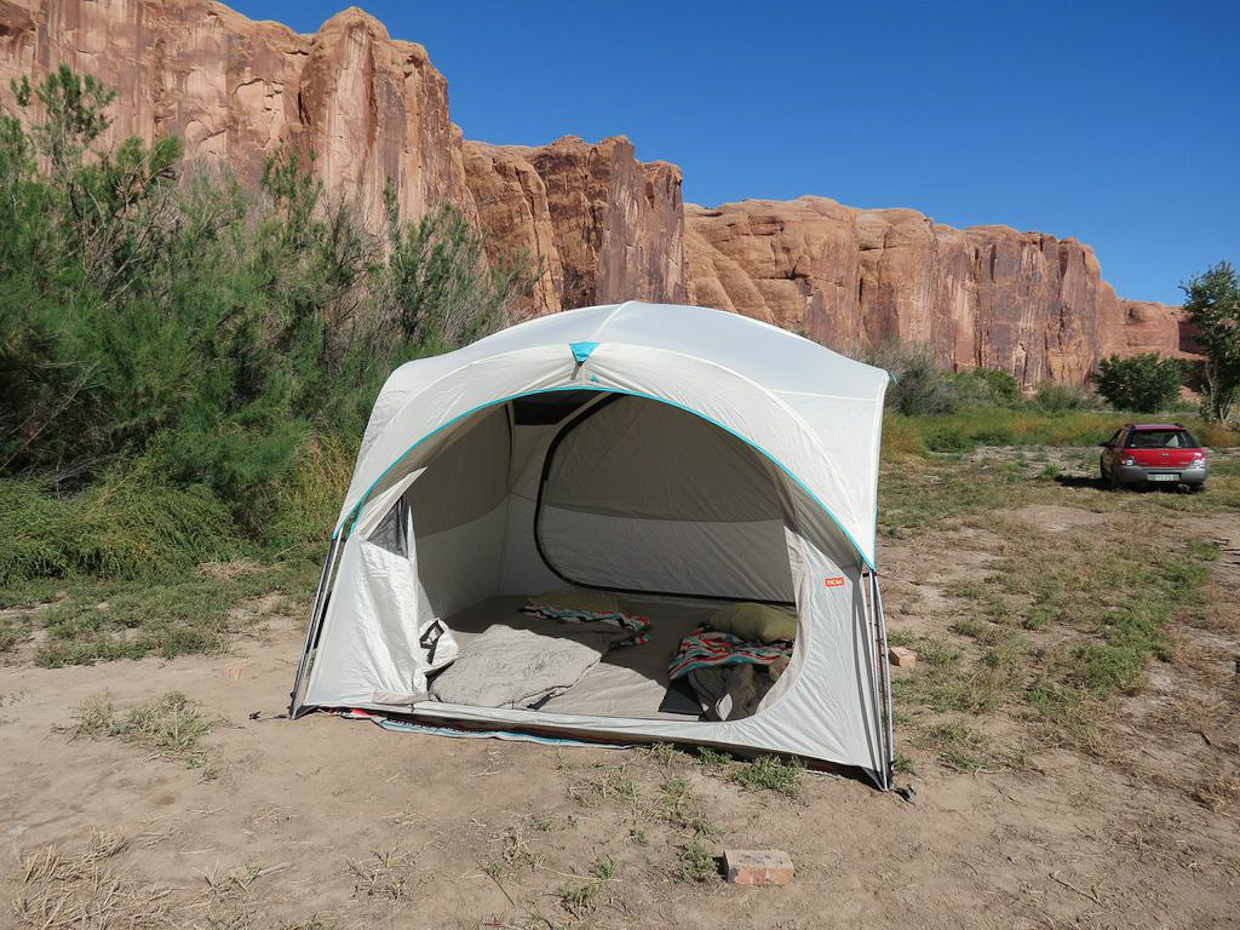
1) A Sick Car-Camping Tent: Ticla’s Mojave 4 tent is a nice, relatively affordable, massive house of a tent. It’s like your own cloth cabin, with views out of all four sides (with a fly that blocks the rain and preserves the views), functional capturing of cross-breezes, and is a way better place to hang out, live, change, etc. than the front seat of your car.
It takes about ten minutes to set up, and voila! You’ve got your own castle to sprawl out in. Shuffling this between campsites and friendly lawns is pretty efficient: granted, we tested it out while climbing in Rifle, CO, but the approval of climbing dirtbags was taken as a good sign, and Ticla’s G.O.O.D. (Get Out Of Dodge) system means quick a quick pack-up when you’ve overstayed your welcome with your friends or local park rangers. The tent material is dog-resistant, and if summer for you means following all those sweet baaaaands, Ticla’s tents fit regulation Forest Service and festival camp sites. The Mojave 4 retails for $425.
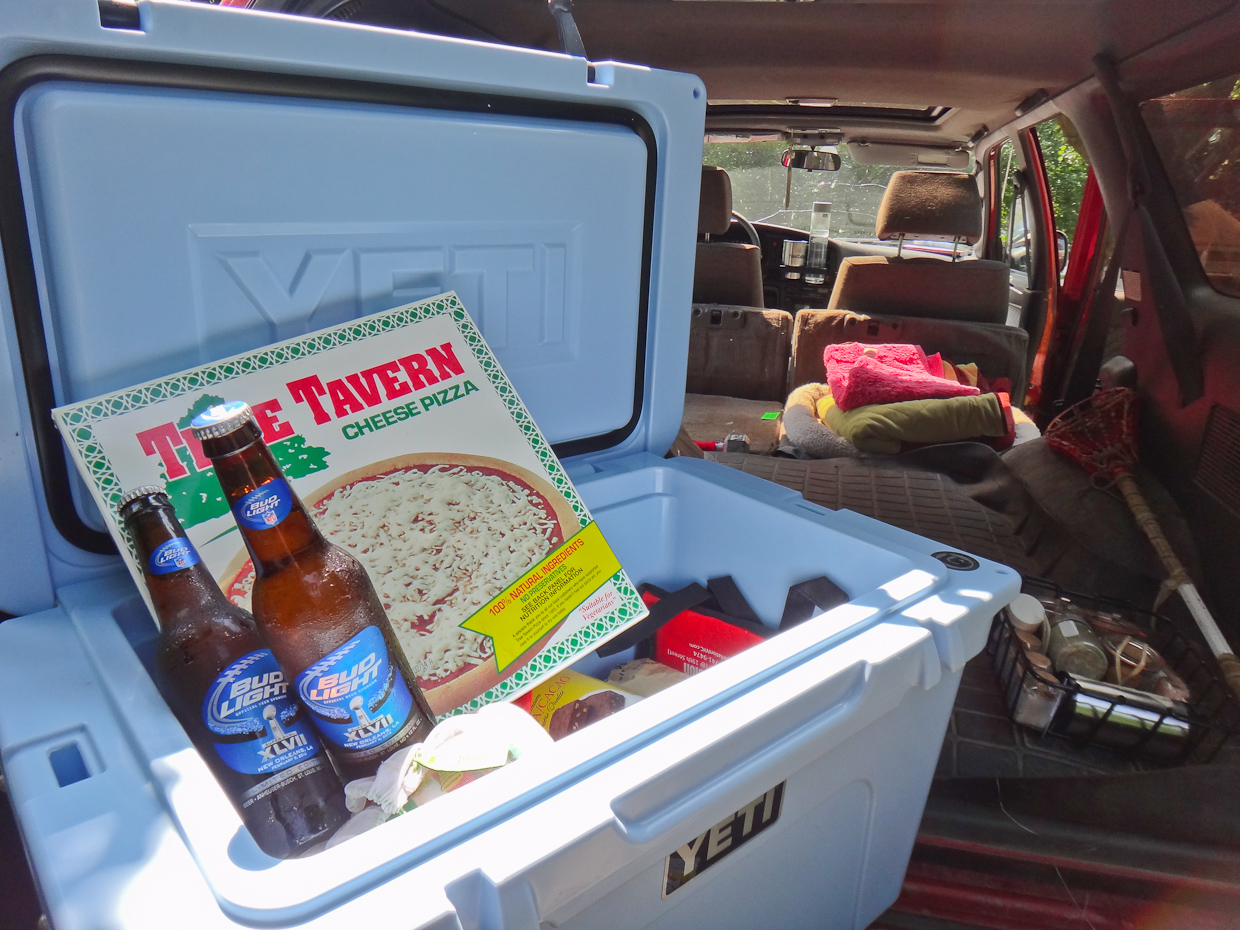
2) A Badass Cooler: Proper storage method is absolutely necessary; lest you waste all that money you saved not renting money eating out. You also need to think about hungry bears, who also live in the woods. Yeti Coolers, like the Roadie 20 quart cooler, are bear-resistant options that will also keep ice for a week. It’s a lot for a cooler, but you’ll make it back by not having to eat out all the time because all your groceries rotted. Plus, you’ll never need to buy another cheap, crappy, destined-for-the-landfill-7/11-cooler again. Appropriate options from Yeti vary from 20-45 quarts and $250 to $350.
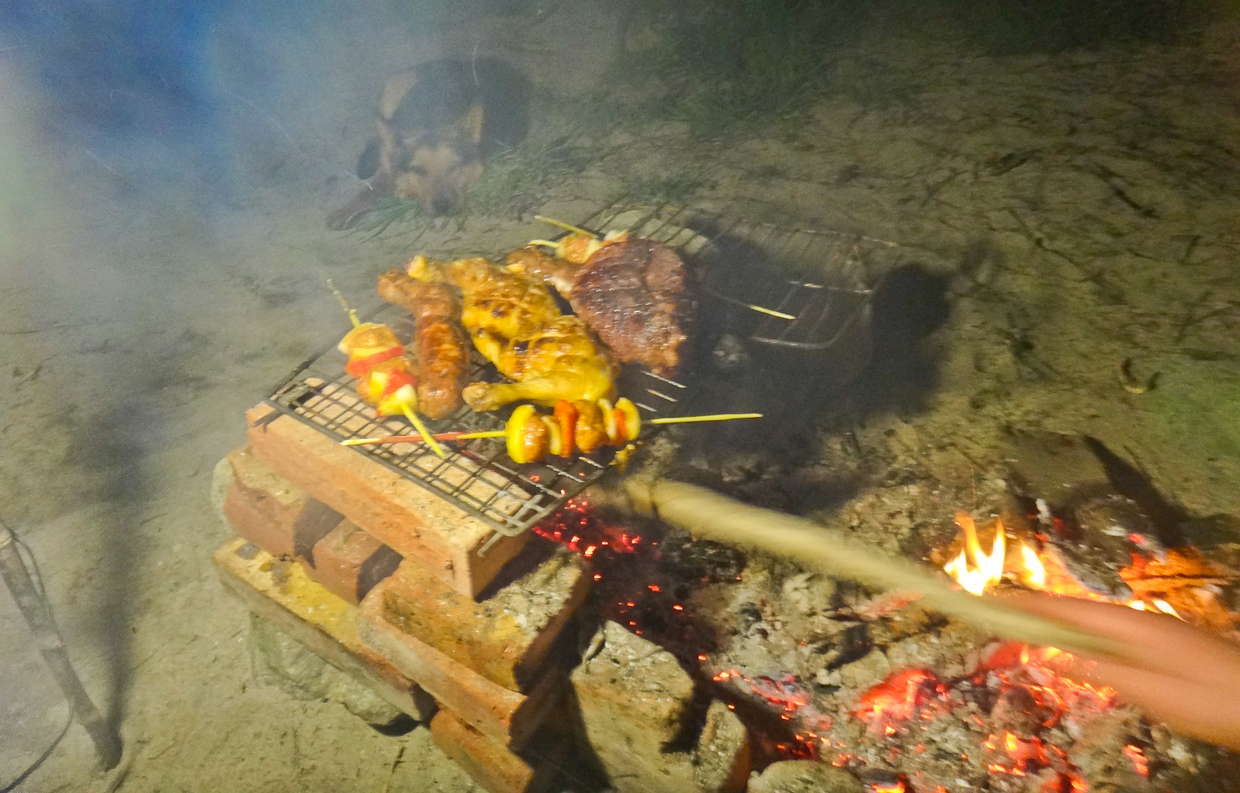
3) A Good Stove/BBQ setup: A little, light, versatile Jetboil cooking stove is something you can take on winter ski expeditions in the future, is what Jeremy Jones used in the Himalayas, and damn if anything can get your coffee ready faster in the morning. You’ll use it forever.
Add one old grilling rack, probably a $3 purchase at the thrift store, to throw over the fire on some bricks, and you’ve added a low-maintenance, easily-stored BBQ setup to your quiver.
4) A Local Gym Membership (varies in price): While public libraries might be the preferred washing station of the truly homeless, ski town working-class homeless known gyms are an essential part of both maintaining a sanitary public presence (you know, for that job you’re still working) as well as hygienic sanity. Gyms offer showers and quite often, free towels, shampoo, and soap. They might even have a hot tub, a sauna, and most definitely have a bunch of workout equipment you can use to train for skiing now that you’ve paid a subscription fee for the bathroom.
5) A Paco Pad: You could just stick with a much cheaper Thermarest, as spending $190-275 on your mobile mattress is a big. But if you get a double-wide Paco pad, combined with your tent mansion and improvised cooking skills, you could even impress a date with your sick setup out in nature, instead of him/her writing you off immediately-something which is definitely going to happen in your car, your friend’s couch, or in a tiny, stinky tent. Not to mention that these bad boys float and can double as rock climbing pads, yoga mats, or if you’re bored/dumb/cheap enough, white-water rafts to run class 5 rapids, as shown above.
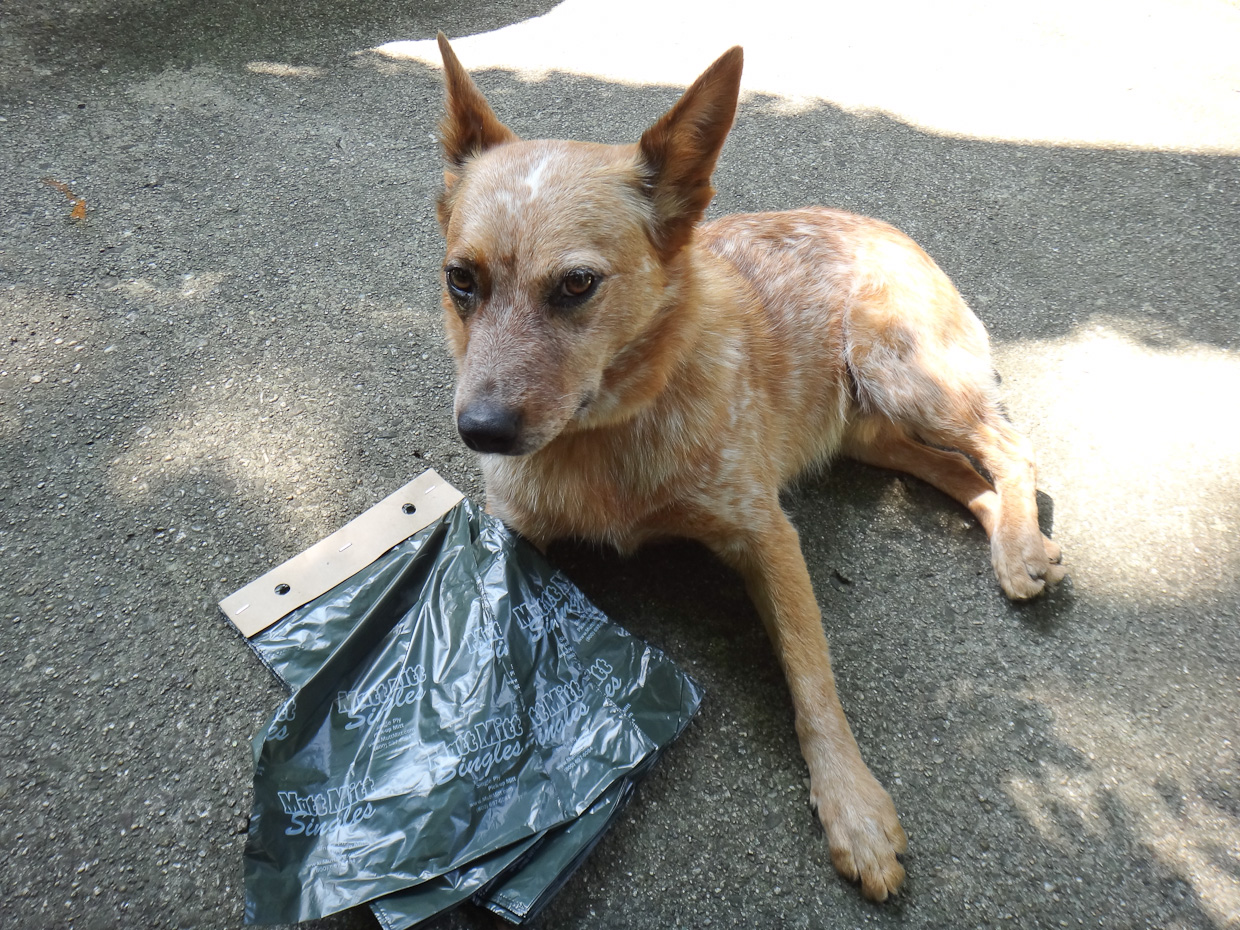
6) Mutt Mitts: A fistful of doggie bags, and an airtight five-gallon bucket to hold them into between dumpster runs, is an essential part of being a sanitary (and sane) homeless pet owner. Let’s face it, the gym’s trash can isn’t going to be that close to camp most days, and unless you’re in one of your rotating backyard camp sites, you’ll need a contingency plan. So don’t be disgusting, and don’t make your campsite disgusting (the feds will get pissed!). Give the forest a break and pack it out. Doggie bags are free at many area trailheads, and/or cheap at pet stores.




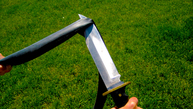



__video_thumb.jpg)
